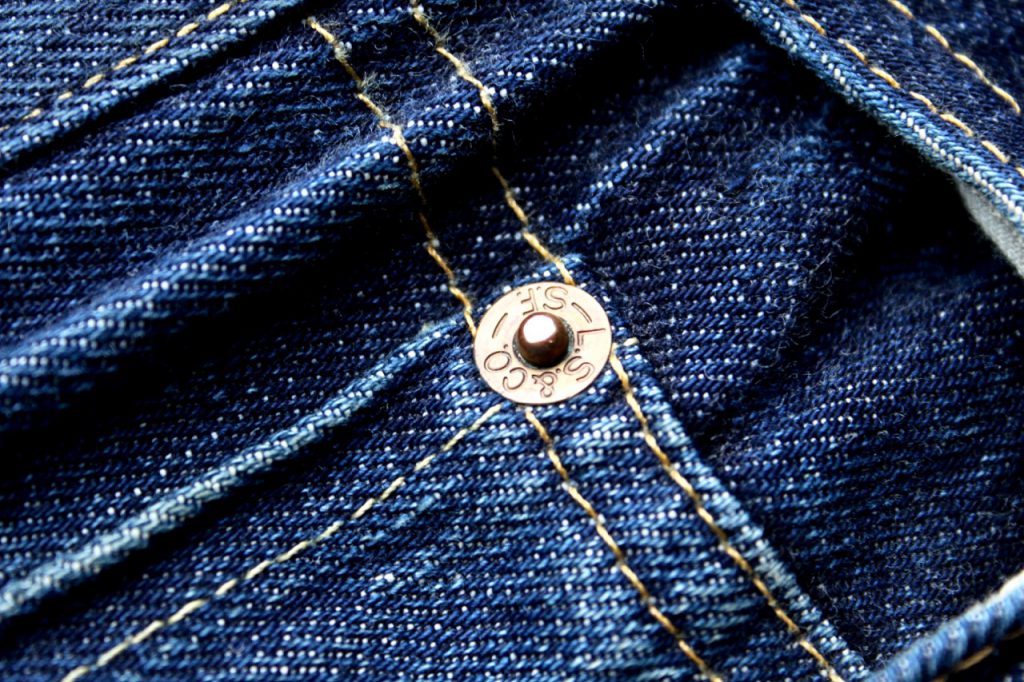Rivets are small yet iconic metal bits found on jeans.
Their original purpose was to strengthen parts that could easily tear. Today, they mainly serve a decorative purpose.
This Encyclopedia entry is a must-know term. Learn more in our Denim vocabulary.
Rivets are made by pressing or hammering a ‘washer’ or ‘disk’ onto a metal stud poking through the fabric.
It was the riveting of workwear trousers, invented by Jacob Davis, and patented by Levi Strauss & Co. in 1873, that created the legend, which gave blue jeans their iconic and enduring status.

The origin of riveted denim workwear
One of the most common problems that wearer of jeans had was that pocket corners and other stress points would wear out and tear prematurely.
In January of 1871, a tailor of Latvian descent named Jacob W. Davis, who lived in Reno in Nevada, started hammering copper rivets onto the places where his customers would often rip their pants; at the pocket corners and the base of the fly.
This was the invention of riveted blue jeans, and rivets are still the most important defining feature of the jeans we wear today.
The rivet was a simple, durable and elegant solution to an urgent need for durability. It kept pockets and seams from bursting when miners and workers wore their pants during heavy work.
The rivet also differentiated Davis’s pants from those his competitors produced, which made them an instant success. This meant rivals soon began imitating his design.
Davis knew he had to protect his design, but he didn’t have the $68 to pay for the patent. In 1872 he partnered up with one of his fabric suppliers, Levi Strauss from San Francisco. Strauss paid for the patent while Davis moved to San Francisco to oversee production.

Levi Strauss & Co. received the patent for making riveted denim workwear on May 20, 1873. This gave the company a headstart and created the competitive edge and first-mover advantage that it still benefits from today.
In 1873, they got the patent to use rivets on denim workwear, and by US patent law of the time, they held onto the patent until 1890.
For those 17 years, Levi’s was the sole maker allowed to produce workwear with rivets, and the company fought off patent infringements with lawsuits. Several competitors came up with alternative strengthening designs. But none of them was as simple and elegant as the copper rivet.
When the patent expired in 1890, rivets became a standard feature of jeans.
That’s when Levi’s started campaigning their claim to the invention. Over the following decades, the San Francisco jeans maker trademarked a handful of the design features of their jeans, including the Two Horse label (in 1886), the ‘Levi’s’ name and the guarantee ticket (in 1928), the red tab (in 1936) and the arcuate (in 1943).
Even though some jeans don’t have rivets at all—and even though most jeans wearers in the 21st century don’t really need the durability that rivets offer—it’s still there because it’s become a defining feature of jeans.
